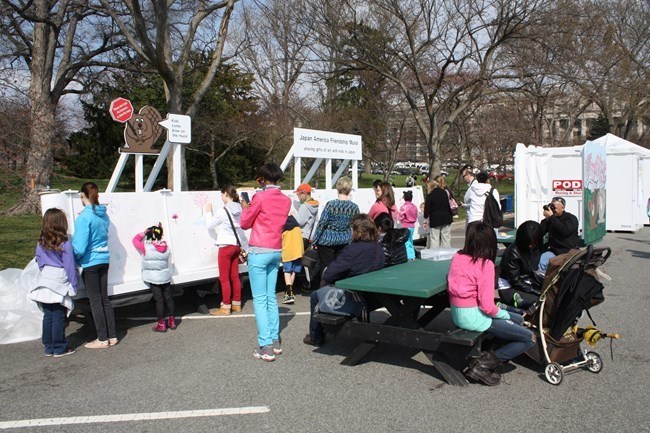Last updated: March 10, 2023
Article
Japanese-American Friendship Mural

The Friendship Mural was more meaningful and significant than many realized. One level of meaning was to say “thank you” to Japan for the gift of Japanese flowering cherry trees. Children at the cherry blossom festival drew pictures on the mural which were photographed and sent as gifts of friendship to the children of Japan, where they were displayed in the city of Mitaka. While many enjoyed participating for this simple reason alone, it held deeper meaning.
The Friendship Mural was not just a one-way message of thanks. Children all over Japan drew pictures and sent them to us as gifts of friendship. All those drawings were pasted onto the mural at the cherry blossom festival, and were also displayed in Mitaka, Japan. There was two-way cooperation and communication through images. Despite differences in language and culture, the children of both countries worked together to jointly create two corresponding murals. Rather than merely being told about the history of gift exchanges between the two nations (there have been continuing gifts over the past century, including the stone lantern and stone pagoda), children became a part of that history. The National Mall uses the slogan “where history happens.” By adding their own art to be sent to Japan, children can say it is where they help make our nation’s history.

The mural embodied meaningful cultural exchange – we can all work together in friendship and create something enduring. The friendship mural, like our nation, is more interesting, more fun, and more successful, not despite our differences, but because of our differences. The Japanese-American Friendship Mural celebrates the diversity of our nation and of our world, and proves we have the ability to all get along.
